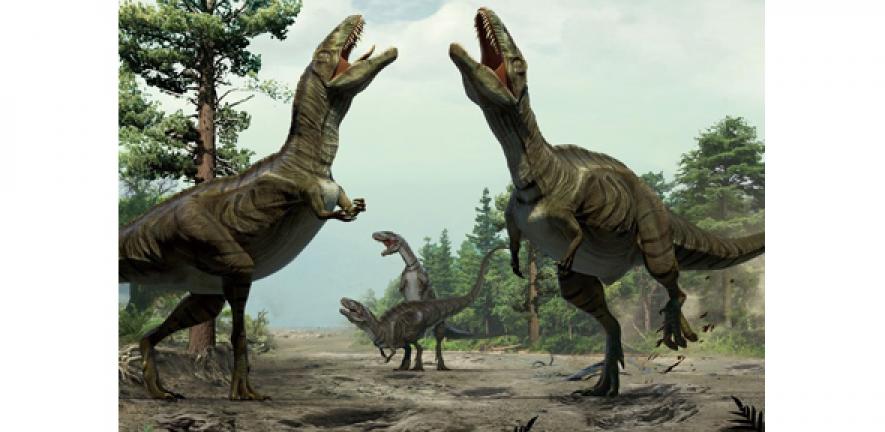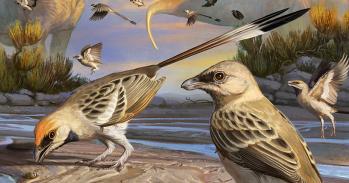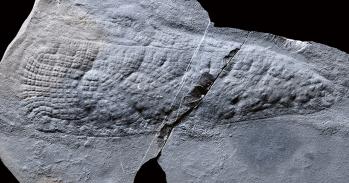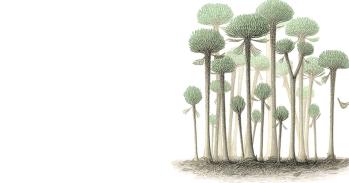
David Norman (Sedgwick Museum of Earth Sciences) discusses how palaeontologists can interpret fossil footprints to find clues as to whether dinosaurs performed dance-like mating rituals.
David Norman (Sedgwick Museum of Earth Sciences) discusses how palaeontologists can interpret fossil footprints to find clues as to whether dinosaurs performed dance-like mating rituals.
Studying dinosaurs is a lot like being a detective. Just as Sherlock Holmes was noted for his ability to interpret the behaviour of victims or criminals using footprints, palaeontologists have a similar practice when looking for evidence of dinosaur behaviour known as ichnology.
This is the study of the traces living organisms leave behind including bones, footprints and even bite marks on leaves. Indeed, Sherlock Holmes' creator, Sir Arthur Conan Doyle, was very well aware of the traces of dinosaur footprints that had been discovered in the rocks of the Weald near his home in south-east England.
Now researchers in the US have discovered some very unusual trace fossils they believe could also be footprints. Although it is far from certain, these markings may provide the first clue as to whether dinosaurs performed dance-like mating rituals similar to those of living birds.
Scratching the surface
The team from the University of Colorado Denver have unearthed some truly extraordinary trace fossils on the bedding surfaces of sedimentary rocks of Cretaceous age in Colorado. The bedding surfaces have revealed an irregular array of large scoop-shaped depressions up to 2m in diameter and adjacent hummocks. Many of the scoops also display clear and unequivocal elongate scratch marks.
Given the geological ages of these rocks, the only large, powerful ground-dwelling creatures likely to be able to make such structures would have been dinosaurs. These curious sedimentary structures are not simply a one-off isolated discovery that can be explained as just a weird bit of geology, but have been found in clusters at a number of discrete sites across Colorado. Each site has a rather similar, comparatively dense, cluster of these scoop-like structures.
At first sight it would be perfectly reasonable to consider that such structures were the remnants of ancient dinosaur nests. Dinosaur nest sites, including eggs, shell fragments and even nestling dinosaur remains are comparatively well known. They have been reported from a range of Cretaceous aged sites that have been found in North America, South America and Asia.

But these “scoops and hummocks” differ in their detailed structure when compared to definitive dinosaur nests. Dinosaur nests tend to be circular, rather flat-bottomed, usually have traces of egg shell and are typically surrounded by a rim-like perimeter wall.
In fact, these new and distinctive structures show no evidence of what appear to be conventional dinosaur nest structure or scattered egg shell fragments. They are elongate, concave depressions with sediment clearly heaped to one side. In many instances, they display scrape marks that appear to have been made by dragging claws.
These structures are most comparable to the “leks” produced by living ground-nesting birds. Leks are effectively display arenas in which male birds perform a courtship ritual that can include dancing, showing off their feathers and making calls to attract the attention of nearby females.
The researchers suggest the geological structures were originally created by theropods, the group of dinosaurs most closely related to living birds and which includes Tyrannosaurus Rex. Theropods may well have been very like modern birds in their behaviour and made the scrapes as part of the production of a display arena for courtship. However, it seems likely that if these marks were leks they would have been next to actual breeding/nesting sites, but so far no trace of nests has been discovered.
Tracking down Cinderella
The frustrating thing about ichnology is that while the tracks and traces left by living creatures can be matched to observations of their actual behaviour, this is rarely the case when it comes to the fossilised traces of dinosaurs. Trying to tie the identity of fossilised tracks to the original track-maker has been a persistent problem for palaeontologists. It’s rather like the hunt for Cinderella: they have to look for animals that lived at the exact time the tracks were formed, with feet bones the right size and shape to precisely fit the shoe of the fossilised footprint.
Fossilised tracks and traces used to be rather disparaged by palaeontologists because the difficulties surrounding the identity of the actual track-maker seemed more or less insurmountable. However, the past few decades has seen a growing appreciation of the information that can be gleaned from such tracks and traces.
This includes the local environmental conditions when the tracks were made, the texture of the sediments that the creature was walking upon, and the details of foot placement, stride length and stride pattern. These can reveal a surprising amount of information about the way the track-maker walked, its posture and even the likely speed at which it was moving – very reminiscent of the skills demonstrated by Conan Doyle’s heroic sleuth.
Just a few years ago the question of bird-dinosaur affinities was also a topic that was very hotly disputed. The discovery of feathered theropods in the 1990s finally proved that theropod dinosaurs were ancestral to living birds. Although we can’t yet be sure, the new research suggests some dinosaurs may have been not just anatomically similar to birds but also have shared some mating behaviours. This gives rise to the amusing possibility of a dancing T. Rex trying to impress his potential mate.
![]() David Norman, Reader in Paleobiology, Curator of Palaeontology, Sedgwick Museum of Earth Sciences, University of Cambridge
David Norman, Reader in Paleobiology, Curator of Palaeontology, Sedgwick Museum of Earth Sciences, University of Cambridge
This article was originally published on The Conversation. Read the original article.
The opinions expressed in this article are those of the individual author(s) and do not represent the views of the University of Cambridge.

The text in this work is licensed under a Creative Commons Attribution 4.0 International License. For image use please see separate credits above.




